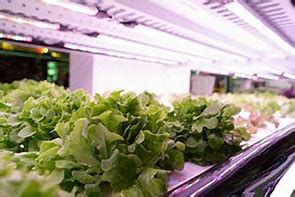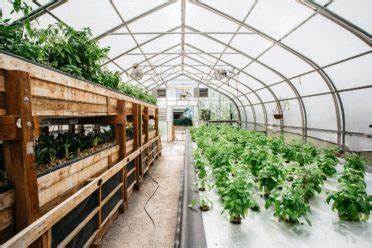
Vertical Farming and Crop Diversity: Paving the Way for a Sustainable Future
Introduction
Vertical farming has emerged as a revolutionary solution to the challenges posed by traditional agriculture methods. By utilizing vertical space and employing innovative techniques, this practice has the potential to enhance crop diversity while addressing issues such as land scarcity and climate change. In this article, we will explore the historical background, key concepts, and benefits of vertical farming for crop diversity, as well as the role of technology in its advancement.
Historical Background
The concept of vertical farming can be traced back to the Hanging Gardens of Babylon, which were built around 600 BCE. However, it wasn’t until the 20th century that the idea gained traction. The pioneering work of agricultural scientists in the early 2000s laid the foundation for modern vertical farming practices. Crop diversity has been historically significant as it helps mitigate the risks associated with monocultures and increases resilience in the face of changing environmental conditions.
Key Concepts and Definitions
Vertical Farming
Vertical farming involves the cultivation of crops in vertically stacked layers, often in controlled environments such as greenhouses or indoor facilities. This method utilizes techniques like hydroponics and aeroponics, which do not require soil, to grow plants efficiently. The benefits of vertical farming include maximized use of space, reduced water usage, and year-round production irrespective of climatic conditions.

Crop Diversity
Crop diversity refers to the variety of different plant species and genetic variations within those species. It plays a crucial role in ensuring food security and sustainability. By cultivating a wide range of crops, including heirloom and rare varieties, vertical farms can contribute to preserving genetic diversity and reducing the dependency on a few major food crops.
Main Discussion Points
Benefits of Vertical Farming for Crop Diversity
Increased accessibility to fresh produce in urban areas: Vertical farms located within or near urban centers can provide access to fresh, locally grown produce, effectively reducing the reliance on long-distance transportation and ensuring a diverse supply of nutritious food.
Reduction of transportation and carbon footprint: By eliminating the need to transport crops from distant agricultural regions, vertical farming significantly reduces carbon emissions associated with long-haul transportation, contributing to a more sustainable food system.
Protection against extreme weather events: Vertical farms are less vulnerable to the adverse effects of extreme weather conditions such as droughts, floods, and storms. This resilience ensures a stable supply of diverse crops throughout the year.
Techniques and Strategies for Crop Diversity in Vertical Farms
Use of hydroponics and aeroponics: These soilless cultivation techniques allow precise control over nutrient delivery and water usage, promoting optimal growth and diversity of crops.
Incorporating heirloom and rare crop varieties: Vertical farms offer an ideal environment for cultivating unique and rare crop varieties, preserving their genetic diversity, and providing consumers with access to diverse and flavorful produce.
Rotating crops and implementing companion planting: These practices help prevent the buildup of pests and diseases, promote soil fertility, and enhance the overall resilience and diversity of crops in vertical farming systems.
The Role of Technology in Enhancing Crop Diversity in Vertical Farms
Genetic engineering and crop breeding methods: Biotechnological advancements enable the development of crops with enhanced nutritional value, disease resistance, and improved growth characteristics, contributing to crop diversity within vertical farming systems.
Precision agriculture and data-driven decision making: Sensors, drones, and advanced monitoring systems provide real-time information on crop growth, enabling farmers to optimize resources, detect issues, and make informed decisions to enhance crop diversity.
Automated systems for monitoring and managing crop diversity: Robotics and artificial intelligence can be utilized to monitor plant health, adjust growing conditions, and manage diverse crop portfolios efficiently, ensuring optimal growth and maximizing crop diversity.

Case Studies or Examples
Vertical farming projects successfully promoting crop diversity include AeroFarms in New Jersey, USA, which cultivates a variety of leafy greens and herbs using vertical farming techniques, and Plenty in California, USA, which focuses on growing a diverse range of crops in urban areas. Examples of crops grown in vertical farms with diverse varieties include lettuce, kale, strawberries, microgreens, and even root vegetables like carrots and beets, showcasing the potential for crop diversity in these controlled environments.
Current Trends or Developments
Recent advancements in vertical farming technology, such as the integration of artificial intelligence, machine learning, and automation, have revolutionized vertical farming, leading to increased efficiency, productivity, and potential for crop diversity. Research findings have shown that crop diversity in vertical farming systems enhances nutritional value, reduces pest and disease risks, and increases overall productivity, making it a promising solution for sustainable food production.
Challenges or Controversies
Potential limitations and constraints of vertical farming include high initial investment costs, energy consumption, and limited scalability, which need to be addressed to fully realize the potential of vertical farming for crop diversity. Controversies surrounding genetic engineering in crop diversity exist, as concerns about the safety, ethics, and long-term impacts of genetically modified crops continue to spark debates.

Future Outlook
Vertical farming has the potential to expand globally, providing diverse and locally grown produce to urban areas and even remote regions as technology advances and economies of scale are achieved. Ongoing research on breeding techniques, genetic diversity preservation, and sustainable farming practices will further enhance crop diversity within vertical farming systems, contributing to a sustainable and resilient food future.
Conclusion
Vertical farming and crop diversity hold great promise for addressing the challenges of the global food system. By embracing innovative techniques, incorporating diverse crop varieties, and leveraging technology, vertical farming can play a significant role in ensuring food security, reducing environmental impact, and creating a more sustainable future.
References
Despommier, D. (2010). The Vertical Farm: Feeding the World in the 21st Century. Thomas Dunne Books.
Giacomelli, G., & Kubota, C. (2016). Vertical Farming. In R. Savvas & C. Passam (Eds.), Hydroponic Production of Vegetables and Ornamentals (pp. 433-470). CRC Press.
Kozai, T., Niu, G., Takagaki, M., & Plant Factory Working Group. (2015). Plant Factory: An Indoor Vertical Farming System for Efficient Quality Food Production. Academic Press.
Singh, S., & Mathur, S. (2021). Vertical Farming for Sustainable Urban Agriculture. In B. Singh, R. Singh, & S. Mathur (Eds.), Urban Agriculture: Practices, Policies, and Perspectives (pp. 95-120). CRC Press.






